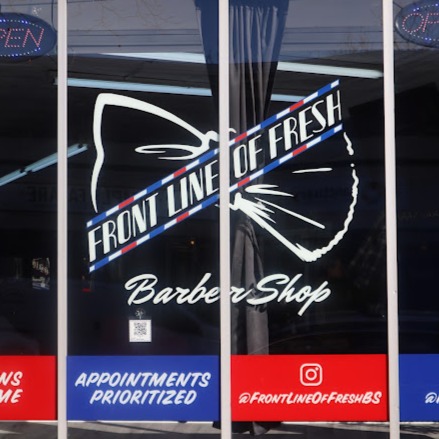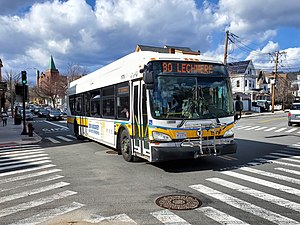Meet Me in Medford | School Committee Member Aaron Olapade
- 4Squares RE

- Jan 11, 2024
- 7 min read
Updated: May 27
Welcome to 2024! As we continue celebrating our new School Committee members, we met with Aaron Olapade to learn more about his Medford connections and devotion to building community in the city he calls home.
First and foremost, congratulations on your School Committee win! We’ll get to that in a moment, but first, let’s talk about your life in Medford— where you live and what you love about living here.
My mother, brother, and I moved to Brooks Street in Medford in 2013 when I was 13, and it’s been our home for almost 11 years now.
While I didn't have much say in where we moved, I've appreciated the decision that my mom, and in some ways, my brother, who is seven years older than me, made for our family. We moved around a couple of times when I was younger, so I was accustomed to change and trying to become a part of a new space and community. However, the opportunities the city has offered me and our family have made it so we can call Medford home. I've found that my energy fits well with the city's vibe, and I feel blessed to grow up here.

What fond memories do you have of growing up in the West Medford neighborhood?
First and foremost, I think the city's diversity is inspiring for me because, as someone who's biracial and has different cultural experiences from both sides of my family, I’m cognizant of the diversity present both in West Medford and across the city.
I went to middle school on the other side of town, so taking the bus — both the school bus and the MBTA— offered me the visual perspective that there were different cultural and ethnic groups represented in Medford, and it made me realize that we don't live in a monolithic society.
The West Medford Community Center has always been a hub for me to engage in community events like Hoops for Hope and senior luncheons, which I used to participate in and volunteer in when I was younger and still occasionally attend now.
I truly value the diversity I see, especially in West Medford Square. For instance, there's the Front Line of Fresh Barbershop, where I frequently hang out, chat with the barbers, and engage with the diverse crowd that gathers there. It's not just about getting a haircut; it's a place where people come together and connect.
It's interesting to witness the diverse mix of people frequenting the place. There's a blend of older individuals who recall a time when life wasn't always so fast-paced, especially before the technological boom. The barbershop and salon environments used to embody a strong sense of community, where hours were spent in deep conversation, fostering a genuine connection and camaraderie akin to a tight-knit family. These spaces served as significant pillars within the community.
For me, this barbershop has evolved and is a return to a similar kind of haven. It's where I feel grounded and connected to the cultural experiences I cherish. Others are discovering this sense of belonging there, too. Across the city, numerous similar pillars cater to different groups—places where both older and newer generations converge, and all of these pillars contribute to Medford's sense of community engagement, something I deeply value.
Being part of this community might have been one of the inspirations behind your decision to join the school committee. I'd love to hear more about your story directly from you rather than assuming.
It's interesting how my interest in politics kicked off around 2018 during my senior year English class, fourth period if I remember correctly. It coincided with the whole Colin Kaepernick situation in the NFL. He initially sat during the Pledge of Allegiance as a protest for BIPOC communities, later transitioning to kneeling. There was a palpable tension in that class, especially since my teacher was a huge football fan. We'd chat about college football and the NFL all the time.
As that conversation about Kaepernick continued for months, I noticed a racial divide forming. We didn't have assigned seats, so students could choose where to sit daily. Slowly, the kids of color seemed to gravitate to one side, while the white students gathered on the other. It struck me that this division had been happening most of the year, not just during this particular discussion.
Sure, some students were comfortable aligning themselves on either side, but for me, being mixed, it felt a bit strange. Some students didn't fit squarely into those larger racial groups like myself. Yet, there was a significant presence of African-American students and those who identified with the white demographic in that class. I felt connected to both groups and felt this unspoken pressure to pick a side.
As I grew older, my inclination toward community engagement, social justice, and nonprofit work intensified. I became more curious about individual identity—how we define ourselves, who we align with, and what influences these decisions. Is it family ties, cultural background, or something else that shapes our identity? These questions really started to drive my interest in politics and community involvement. There's such an intersection of all those questions.
After high school, I took a gap year and joined City Year, a nonprofit based in Boston. I ended up teaching middle school Math and English in Charlestown to kids who were labeled by the school system as high risk for failing or dropping out. These were students flagged for various reasons—some for emotional or behavioral concerns. My role involved a mix of mentoring and teaching, aiming to guide these students.
That experience solidified my passion for this kind of work. It all connected to those discussions about identity in my high school senior year. It became clear as an 18-year-old City Year member working with students who had faced setbacks, struggling to find motivation for academic success or simply to function effectively in society. These were kids who, in many ways, had lost hope because the system had told them they wouldn't make it; 13, 15, and 16-year-olds in the eighth grade, students who made a decision, consciously or subconsciously that they did not have the ability to graduate high school.
On my MBTA commutes to Charlestown, I often saw private and charter school students sharing the same trains. Clearly, these schools had more resources—more funding, staff, and overall opportunities—compared to my students. I never judged or felt resentful toward these kids. But there was a moment when I couldn't help but think: "My students are just as capable as these private and charter school students. Why don't they have the same chances?" It felt like such an unfair gap in equity—financially, academically, and in terms of safety and support, and that inequities transcend geography.
I feel like this is my calling—I need to stay involved in this work. I've got the intention, and I believe I'm gaining the skills and the words to advocate for more equity in education.
Well, it seems you can come home again, doesn’t it? What are some of your favorite spots around the city? Some hidden jewels that newcomers to the community should know about?
I spent all four years of high school on the crew team, so I became very familiar with the Mystic River, and MacDonald Park, across from Wegmans, heading towards Wellington Circle, is one of my favorite spots. I often see people strolling around the big loop leading out to Assembly Row—it's quite popular. And if you head out to the pier, right into the big basin of the river, it's phenomenal.
Once you're there, you'll spot the highway, not the most thrilling view, but then the gorgeous tree line catches your eye, and you might even see the rowers out there doing their thing.
There's this really neat wind chime installation they've set up near the pier, too. If you park next to the state police department building, walk into McDonald Park from there, and head toward the dock, you’ll see the wind chimes installation. It's a pretty cool thing. I've visited more times than I can count. That’s a true hidden gem!
As far as places to eat, Medford has plenty, and one of the Olapade family favorites is Tasty Cafe & Kitchen on Boston Avenue near Tufts University. They have great chicken and waffles, and the smoothies are also wonderful.
We usually wrap up with the question, “If your best friend told you they were considering a move to Medford, what would you tell them?”
The people of Medford, in my experience, are very passionate people, including many who have lived here for their whole lives and others for generations. At the same time, there's a lot of real motivation for change. Our city is this incredible mix of ethnicities, cultures, and races, and that diversity makes Medford Medford.
We've got younger generations, myself included, stepping up, eager for genuine change in various aspects. I'm vocal about it—I have a laundry list of things I'm committed to seeing through. But I also acknowledge there are generations here, individuals who've been part of this city for a long time, with their own perspectives and beliefs.
This mix is what I believe gives us the most comprehensive approach to tackling any challenges or issues in our city. How we ask the questions and approach the potential for change—it'll be quicker and more effective if we make a conscious effort to include new voices.
If you're keen on diving into government, culture, or community events or even considering starting a family here, getting involved in different facets of the community is key, and there are plenty of opportunities to do so.
To connect with Aaron and discover more about his vision for the School Committee and future office hours, head to his website: https://electaaronolapade.com/.
Like what you’re reading here? Want to know more? Sign up for the 4Squares Medford Newsletter and tune in to more conversations with great Medford neighbors!












Comments